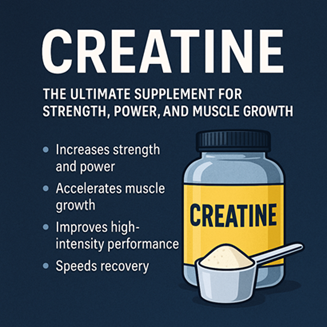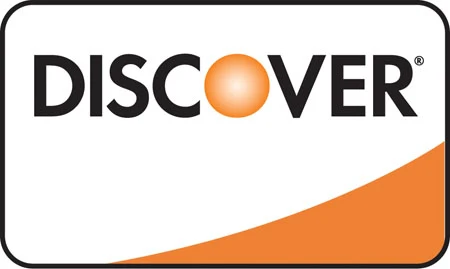Creatine: The Ultimate Supplement for Strength, Power, and Muscle Growth

Introduction – Why Creatine Is a Game-Changer
Creatine is one of the most researched and effective sports supplements in the world. Naturally found in small amounts in muscle cells and certain foods, creatine helps your body produce more energy during high-intensity exercise.
In this guide, you’ll learn what creatine is, how it works, the different types available, the proven benefits, best food sources, and how to use creatine supplements to maximize strength, muscle growth, and performance.
What Is Creatine?
Creatine is a naturally occurring compound made from three amino acids: arginine, glycine, and methionine. About 95% of your body’s creatine is stored in skeletal muscle, where it plays a key role in energy production.
When you perform short bursts of intense activity—like sprinting, weightlifting, or jumping—your muscles rely on ATP (adenosine triphosphate) for energy. Creatine helps regenerate ATP faster, allowing you to maintain high-intensity performance for longer.
How Creatine Works in the Body
-
Increases Phosphocreatine Stores – Creatine binds with phosphate to form phosphocreatine, which rapidly regenerates ATP during explosive movements.
-
Boosts Muscle Energy Availability – More ATP means your muscles can perform more reps, lift heavier weights, or sprint longer before fatigue.
-
Supports Cellular Hydration – Creatine pulls water into muscle cells, improving muscle volume and signaling anabolic growth.
-
Enhances Protein Synthesis – By increasing training capacity, creatine indirectly promotes greater muscle mass over time.
Proven Benefits of Creatine Supplementation
1. Increases Strength and Power
Creatine is one of the most effective supplements for boosting maximal strength and power output, making it a staple for weightlifters, sprinters, and athletes.
2. Accelerates Muscle Growth
Regular creatine use can increase lean muscle mass, particularly when combined with resistance training.
3. Improves High-Intensity Performance
Supports sports that require repeated explosive movements such as soccer, basketball, and CrossFit.
4. Speeds Recovery
Creatine may reduce muscle cell damage and inflammation, helping you recover faster between training sessions.
5. Supports Brain Health
Creatine also plays a role in brain energy metabolism, with emerging research suggesting benefits for memory, cognitive performance, and mental fatigue.
Types of Creatine and Which One to Choose
1. Creatine Monohydrate (CM)
-
Most researched form with hundreds of clinical studies supporting its effectiveness.
-
Pros: Affordable, effective, safe.
-
Cons: May cause mild water retention (intramuscular, not fat gain).
2. Creatine HCL (Hydrochloride)
-
More soluble in water; potentially easier on the stomach.
-
May be suitable for individuals who experience bloating with CM.
3. Buffered Creatine (Kre-Alkalyn)
-
Marketed as pH-stable for better absorption, though research is mixed.
4. Micronized Creatine
-
Same as creatine monohydrate but processed into smaller particles for better mixability.
Recommendation:
For most people, creatine monohydrate remains the gold standard—proven, safe, and cost-effective.
Best Food Sources of Creatine
While creatine is found naturally in food, you’d need large amounts to match supplementation levels.
-
High in creatine: Beef, pork, salmon, tuna, cod.
-
Moderate amounts: Chicken, milk, eggs.
-
Plant-based diets: Creatine intake is minimal; supplementation is especially beneficial for vegetarians and vegans.
How to Take Creatine for Best Results
1. Loading Phase (Optional)
-
20g/day split into 4 doses for 5–7 days to quickly saturate muscles.
2. Maintenance Phase
-
3–5g/day to maintain optimal muscle creatine stores.
3. Timing
-
Can be taken any time of day, but pairing creatine with carbs or post-workout protein may slightly improve uptake.
4. Hydration
-
Drink enough water daily, as creatine draws fluid into muscle cells.
Safety and Side Effects
Creatine is considered safe for healthy individuals when taken at recommended doses.
Possible mild effects: temporary weight gain from water retention, occasional stomach discomfort (reduce dose if needed).
Long-term studies show no adverse effects on kidney or liver health in healthy individuals.
Latest Innovations in Creatine Supplements
-
Creatine blends with beta-alanine, electrolytes, or amino acids for all-in-one pre-workouts.
-
Micronized powder for improved solubility and absorption.
-
Flavored creatine drinks for easier daily intake.
-
Capsule and gummy formats for convenience.
Key Takeaways and Recommendations
-
Creatine is one of the most effective, safe, and affordable supplements for muscle growth, strength, and performance.
-
Creatine monohydrate is the best choice for most people.
-
Combine supplementation with progressive resistance training and a balanced diet for optimal results.
-
Stay consistent—creatine works best when taken daily, not just on workout days.
Whether you’re a strength athlete, a weekend warrior, or simply looking to boost energy and performance, creatine remains a science-backed powerhouse supplement for both body and brain.








